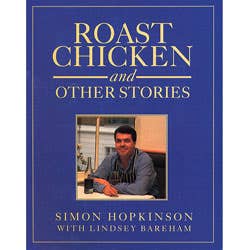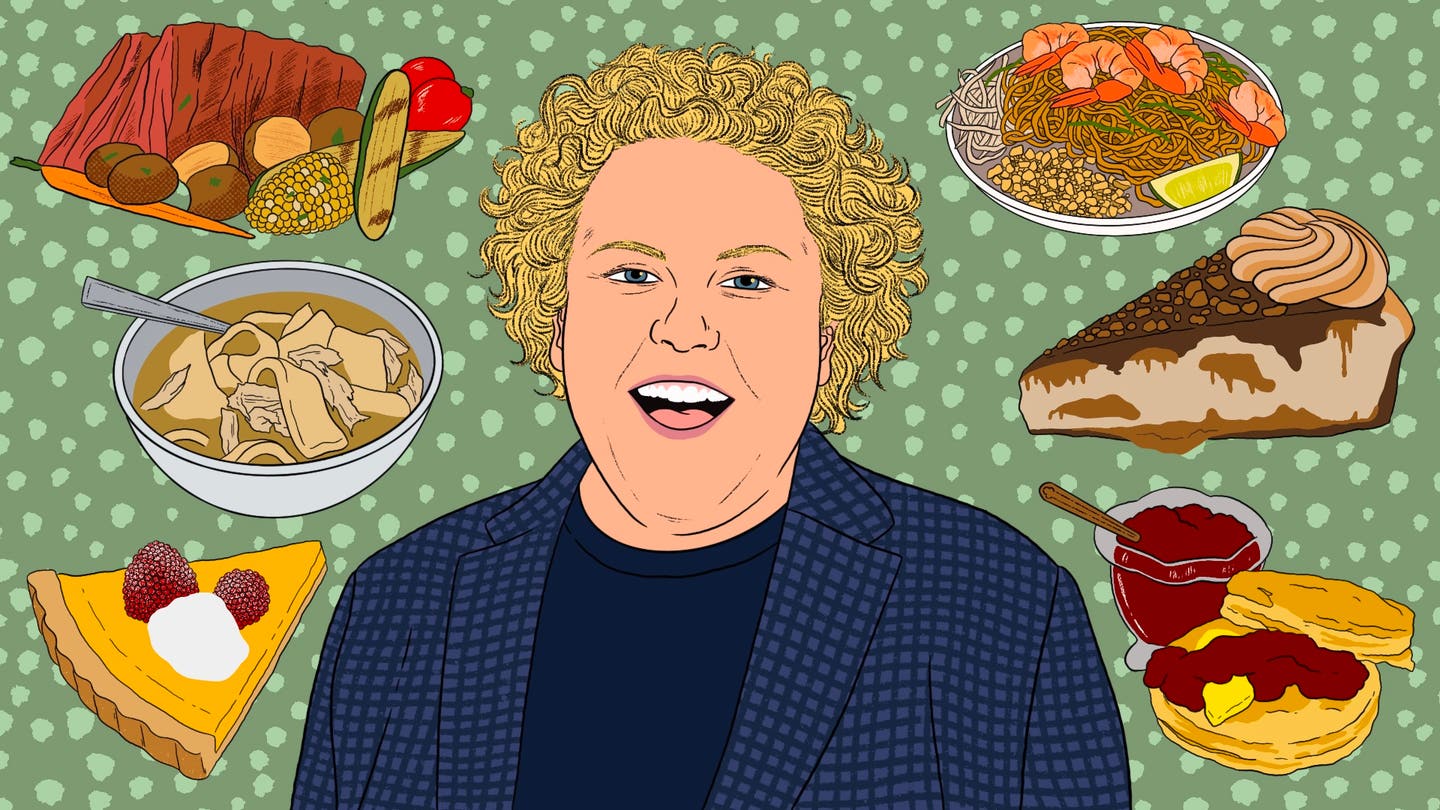
Is London Cooking?
For the gastronome, there will always be two Englands. The England of gourmet folklore is a no-star, low-comic, ne-vaut-pas-le-voyage sort of place. In the nightmare kitchen of this England, oversteamed vegetables and cereal-clotted sausages, gray mutton and leathery custard are the specialties of the day. HP Sauce and Bovril are on the table. It is always raining in this England. There is no central heat.
The other England is the home of Elizabeth David and Jane Grigson, of charming markets with wonderful game and gull's eggs, glorious strawberries and Scotch salmon; of pubs informally tossing off simple French food as a sideline and stressing "real" ale as a mainstay for discerning clients. This is the England that coined the word "foodie," that plays host every year to the world's intellectual food elite at the Oxford Symposium, and that rates its many fine restaurants in the ultraserious Good Food Guide.
Two stars of that volume—two of the best-known chefs in Britain today—Simon Hopkinson and Alastair Little, have just published cookbooks. Both have produced books that are strenuously cheery presentations of relaxed but (it is implied) brilliant food: Roast Chicken and Other Stories (Ebury Press, 1994) by Simon Hopkinson with Lindsay Bareham, and Keep It Simple: A Fresh Look at Classic Cooking (Overlook Press, 1994) by Alastair Little and Richard Whittington.
Hopkinson and Little are products of the world that Grigson and David made. Hopkinson actually worked as an inspector for critic Egon Ronay's guide to food and hotels in Britain, and both established excellent reputations for themselves in London's restaurant scene.
Judging them from their books, however, I can't say that Little impresses me very much. It would be easy to overlook the cliches ("Spring is a season of rebirth and reawakening"), but the blatant misinformation and clumsiness is too frequent, too discrediting. Despite what Little writes, for instance, sweetbreads are not the thyroid gland, but the thymus or pancreas. Escalope of salmon with sorrel was not introduced by the Troisgros brothers in 1974 to the "international restaurant-going cognoscenti" at a public dinner for Valery Giscard d'Estaing. It was a listed Troisgros specialty in the Guide Michelin as long ago as 1969 or 1970, and was already well known to cognoscenti. Bourdaloue, a classic French fruit and cream dessert, is misspelled "Bourdalue."
Little has convinced himself that millions of Italians are wrong to mix grated parmesan into a risotto as it comes off the stove (he insists on shaving curls of cheese over the dish after it has been served at the table instead). His recipe for salade niçoise calls only for "black olives," not the niçoise olives that are essential to the dish—and he puts bottled ketchup in the dressing. (For the record, Keep It Simple won the 1994 Glenfiddich Award in Britain as Cookbook of the Year, so apparently not everyone agrees with my assessment of its merits.)
Hopkinson is in another league. He commits no howlers. He writes clearly and engagingly. Sometimes he's even funny (as when, in the course of wishing the British weren't squeamish about eating brains, he fantasizes about serving deep-fried brain gobbets as cocktail snacks without telling people what they are). He is also generous towards his toque-bearing colleagues—friends he's made dining around the world.
Many of the recipes offered here come from such places, or are Hopkinson's adaptations of ones that do. He is also an acute reader of cookbooks and has culled many fine things from them for this book. This approach makes Roast Chicken almost an informal history of cooking in the English-speaking world and France over the period during which French chefs escaped the strictures of hidebound tradition, the British emerged from postwar austerity, and the former colonies started losing some of their provinciality—resulting in the brave and often splendid culinary culture of today.
Hopkinson achieves all this almost unintentionally, because his main goal is to share with others how he cooks. And in sharing himself, he tugs along all the influences he has digested at stove and table. So in the end, it is Hopkinson's voice, Hopkinson's taste, and Hopkinson's style that bend everything else into shape.
Here he is, for instance, explaining himself with typically light-handed authority: "The title of this book … was chosen simply because it had a friendly ring to it, and I hope that it sounds inviting and uncomplicated. I also happen to enjoy roasting a chicken almost more than anything. It is very satisfying to look upon a fine chicken turning crisp and golden as it cooks. Even the sound of it causes salivation, and the smell of it jolts the tummy into gear."
The chapter on chicken starts with an ebullient two-page essay that hops from the virtues of poulet de Bresse to the unborn eggs one sometimes finds in ungutted fowl and what to do with them (remove, beat, and use for enriching stock or soup) to his memory of roast chicken at L'Ami Louis in Paris to a summary of his own favored methods.
With chicken, he insists, it is ultimately the technique, not the raw materials, that matters: "A good cook can produce a good dish from any old scrawnbag of a chook." Four recipes follow. First is a very basic but also sensibly detailed "simple" Roast Chicken. Next, almost apologetically, Hopkinson offers directions for grilled breast of chicken with Provençal vegetables and aioli. Having exemplified what might be called the poles of poultry possibility in oven and on grill, he turns to poulet poche a la creme with crepes Parmentier, inspired by an item on the menu at Georges Blanc, the three-star hostelry in Vonnas. Hopkinson, deceptively breezy, makes it sound almost homey. After all, the potato pancakes descend from Georges Blanc's grandmother, and Hopkinson's own "not so grand" chicken recipe is actually quite simple. But his subtext is his memory (too quickly passed over) of "one of the best dishes I have ever eaten."
What needs to be said in greater detail is that eating an apparently simple chicken dish in Vonnas in the heart of chicken heaven in the Bresse country is, arguably, the global apex of great simple dining. Georges Blanc has devoted his extraordinary skills to perfecting a temple to the chicken. In an era of visually sensational dishes, he concentrates on intrinsic taste. That is undoubtedly what wowed Hopkinson and what he is aiming at sharing here.
Hopkinson is more explicit and helpful with his last chicken recipe, a stripped-down version of what may well be the most famous chicken dish of our time—Michel Guerard's poulet saute au vinaigre. It was a landmark dish. The fundamental piercing note of vinegar, muffled a bit by chicken stock and juices, tomato and whatnot, stood out and defined the luscious sobriety of the new cuisine. Hopkinson has understood this and pays homage with a cleverly streamlined version of his own. He dispenses with the camouflaging folderol that Guerard may have felt he needed in that dawn of an era.
Hopkinson himself is hiding a lot of what he knows in this disingenuously simple but admirable book. He has more to tell us.
Keep Reading
Continue to Next Story










